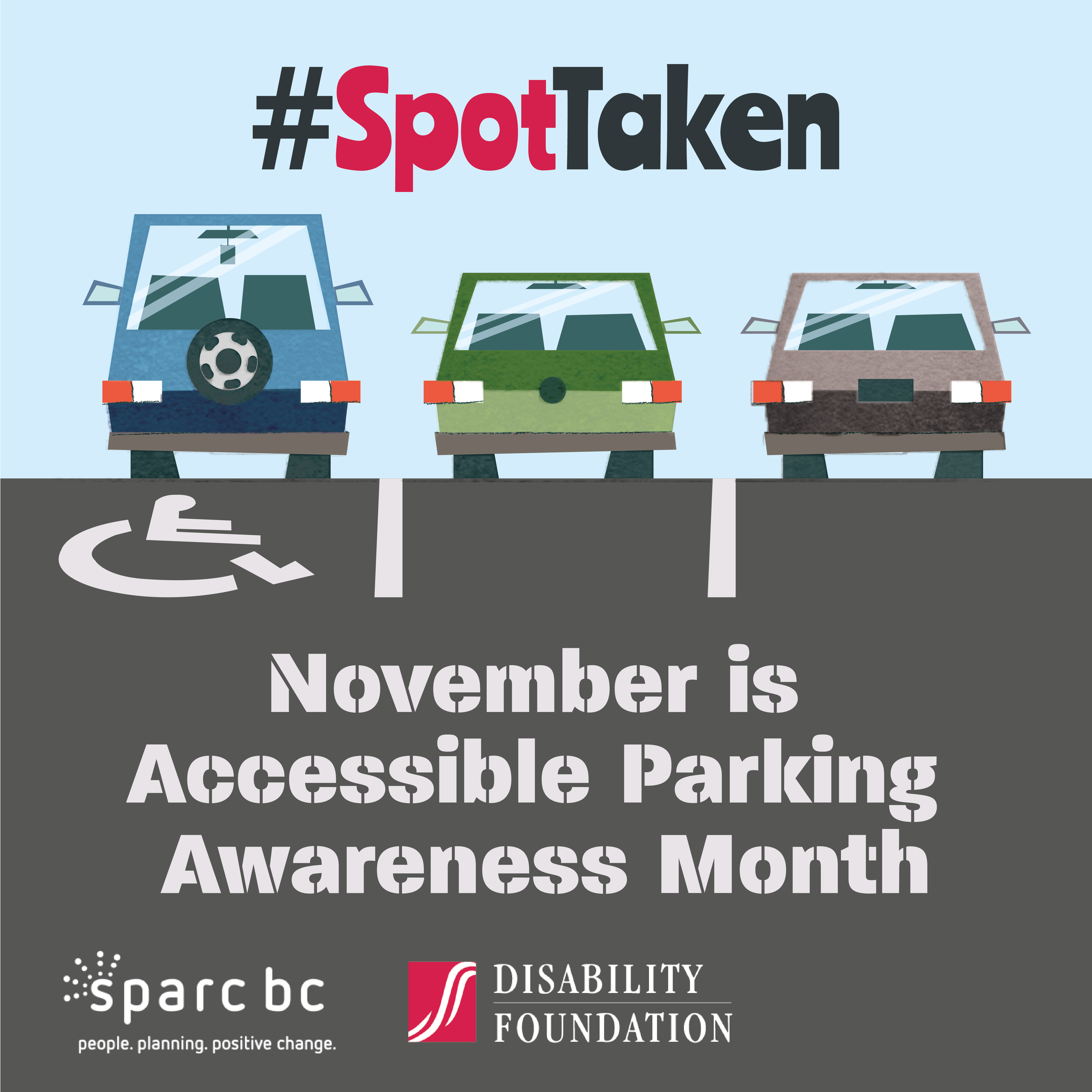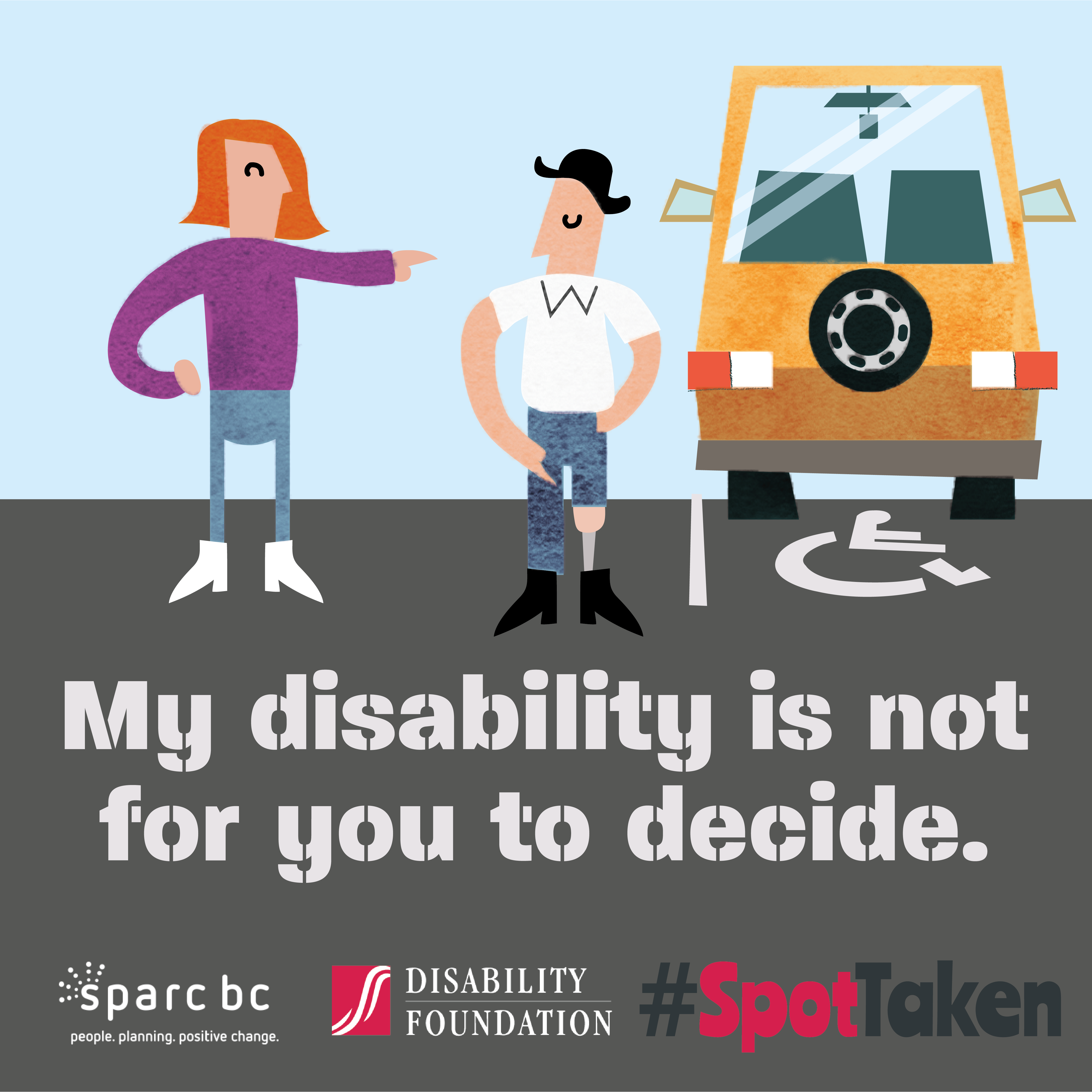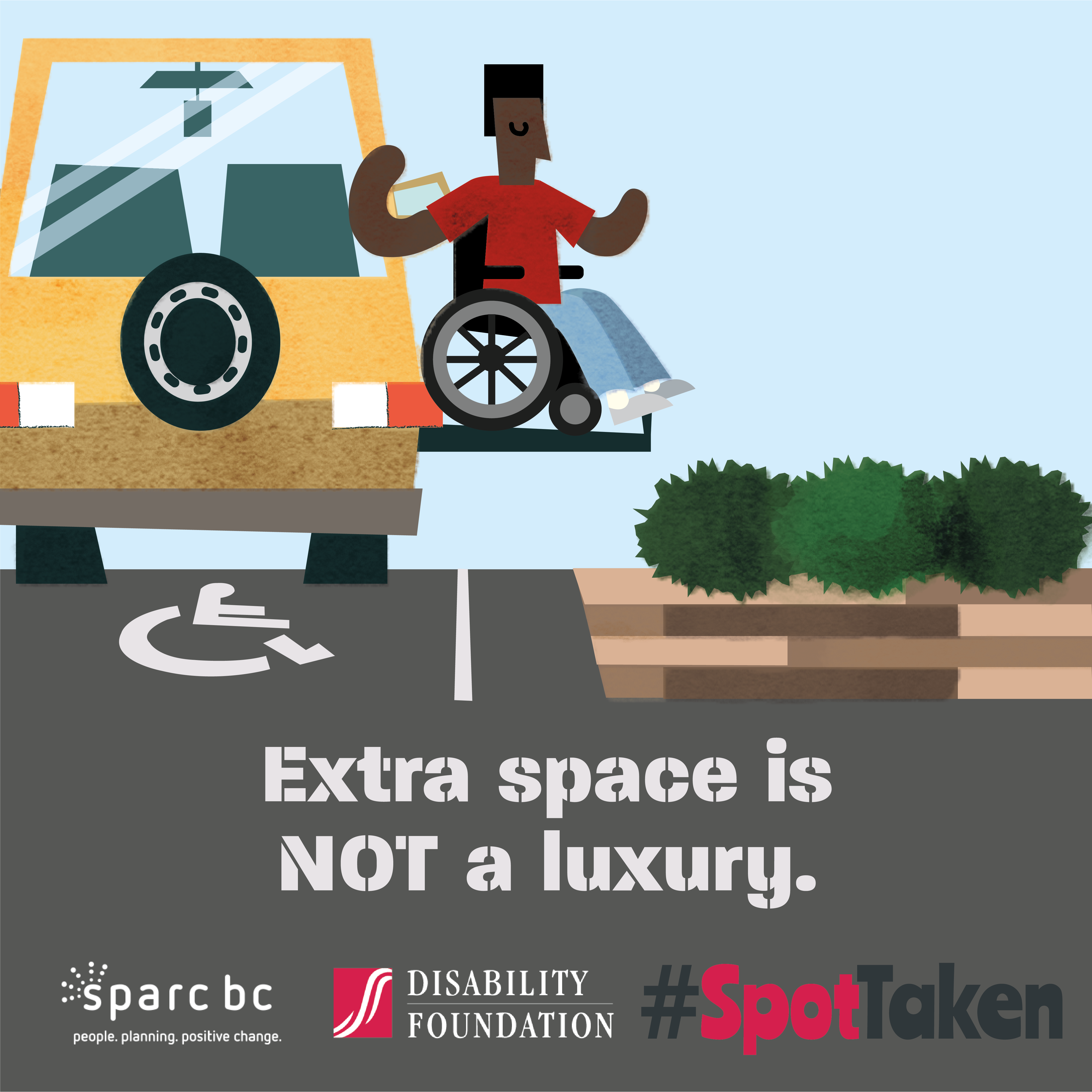By Codi Darnell
November 16, 2021
 “I’m only in it for the parking.”
“I’m only in it for the parking.”
Whether it’s written on a t-shirt or a bumper sticker, it’s an easy joke for many of us in the disabled community to make. When you enter a packed parking lot and see an empty spot with that bright blue square featuring a white wheelchair stick figure, it can absolutely feel like a perk. But accessible parking is not merely a convenience, it is a necessity. And it can be a huge source of frustration, which is why Sparc BC and the Disability Foundation have named November, Accessible Parking Awareness Month.
It may be the limited number of designated spots in any given parking lot, the misuse of the spots by others, or the poor planning around the parking spaces, but, whatever the reason, it’s true that the accessible parking perks often don’t live up to the hype. For many people with disabilities, those parking spaces are their only option and when the spots are full, blocked or insufficiently wide, which they often are, many of us cannot access the building or activity we showed up for.
When I opened my computer to start this article, waiting in the warmth of my car for my son to finish his soccer practice, I was parked next to a well-marked accessible parking spot. While brainstorming which parking experiences to share, a brand new one pulled right in beside me – literally. It was a blue Toyota; two boys hopped out of the back and started in the direction of the fields, the driver emerged a moment later.
As has become habit, I looked for the parking permit hanging from the rear-view mirror – nothing. I told myself not to jump to conclusions. I scanned the dashboard – nothing. I even double-checked the sign outside to make sure I wasn’t the one confused – I wasn’t. It was very much an accessible parking space, and he did not have permission, and therefore, the need to use it.
 The man and I briefly made eye contact and he looked guilty. He glanced back at the accessible signage and leaned forward like he might go back to his car. But as soon as I turned my attention to my computer, he quickly walked away, the lights of his car flashing as he locked it.
The man and I briefly made eye contact and he looked guilty. He glanced back at the accessible signage and leaned forward like he might go back to his car. But as soon as I turned my attention to my computer, he quickly walked away, the lights of his car flashing as he locked it.
This is just one example of how accessible parking can be misused. And it’s just one of the many reasons we need to bring more awareness and understanding to these designated parking spots, to show how they benefit the lives of people who require them and how it affects those people when problems arise.
Who is it for?
I’ve seen dirty looks cast in my direction as I pull my car into an accessible spot. People see a young(ish) woman drive in and wonder what I could possibly need that spot for. It isn’t until I pull my wheelchair out that I see embarrassment register on their face. Ah yes, the mobility device – the tactile proof that I require the parking space I have a permit for. But, despite what the white wheelchair stick figure on the blue sign might portray, accessible parking is not just for people who use mobility devices.
It’s important to remember that parking permits are issued for a multitude of reasons. There are invisible disabilities that require people to be near their intended destination. If you have a reason to believe someone is abusing a parking permit, don’t confront them. Instead, make a note of their permit number and file a report with the issuing organization.
What makes a parking space accessible?
 I promise you that an accessible parking space goes beyond a label. There is a list of boxes that need to be ticked off for a space to be truly accessible.
I promise you that an accessible parking space goes beyond a label. There is a list of boxes that need to be ticked off for a space to be truly accessible.
- They are wide to allow space for mobility devices.
- They are close to the entrance of a building.
- They are bordered on either side by “no parking” slash marks that give sufficient room for a ramp to be deployed.
- They aren’t blocked by a pay station, plowed snow, extra outdoor seating or anything else that would make the spot unusable.
Having well-executed accessible parking spaces in all parking lots is essential for the independence and well-being of people with disabilities. Currently, those spots are like diamonds – rare and precious. But there is a call for change.
#SpotTaken Awareness Campaign
For the month of November, Sparc BC and the Disability Foundation want to see your experiences with accessible parking. Share a photo on Facebook, Twitter, Instagram or LinkedIn, along with the hashtag #SpotTaken to shine a light on some of the everyday issues you face when it comes to parking. But keep in mind, the goal of this initiative is to bring awareness to the general widespread concerns people face when dealing with accessible parking; it is not meant to call out or shame any person or business.
We all know that change happens best when we work together. However, nobody can fix problems that they don’t know exist. Take a moment this November to share and to listen so we can all work towards a more accessible future.
For more information on this awareness campaign, visit the #SpotTaken page on the Disability Foundation’s website.
